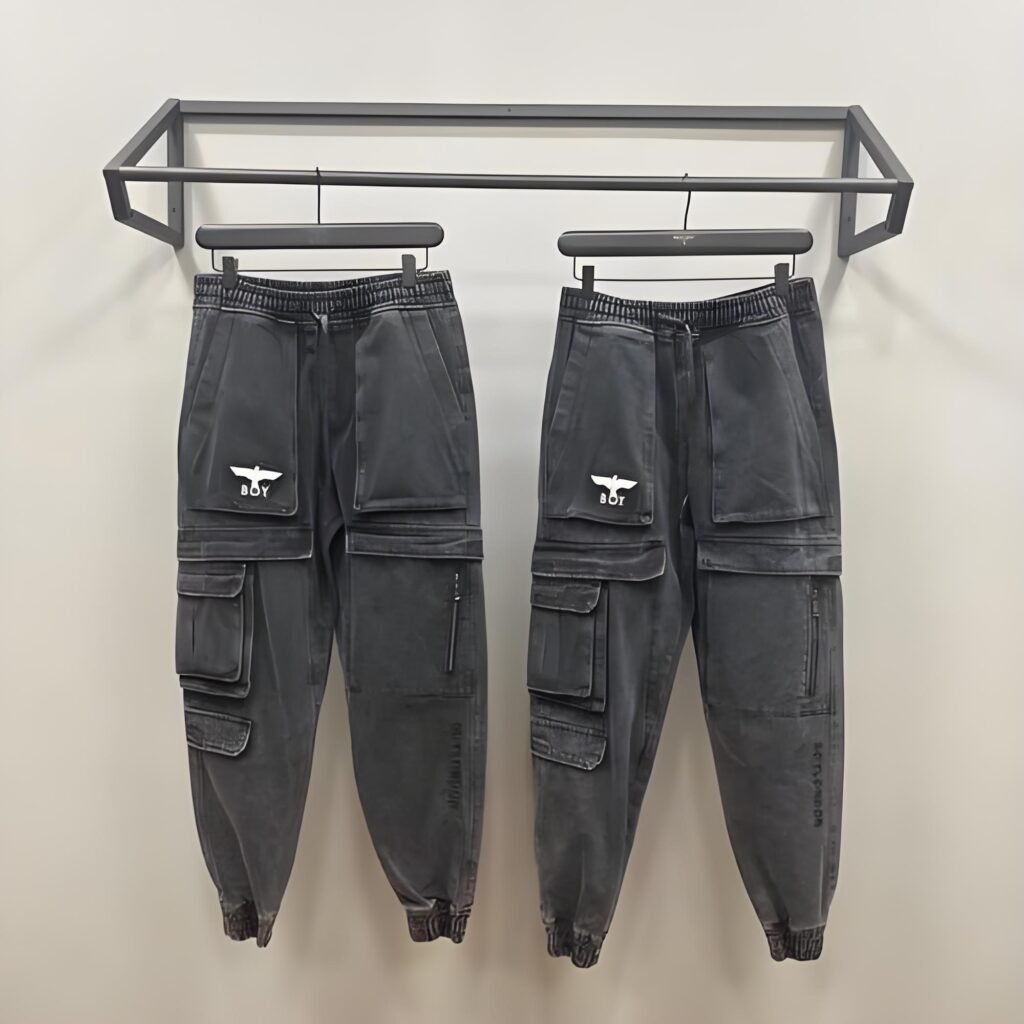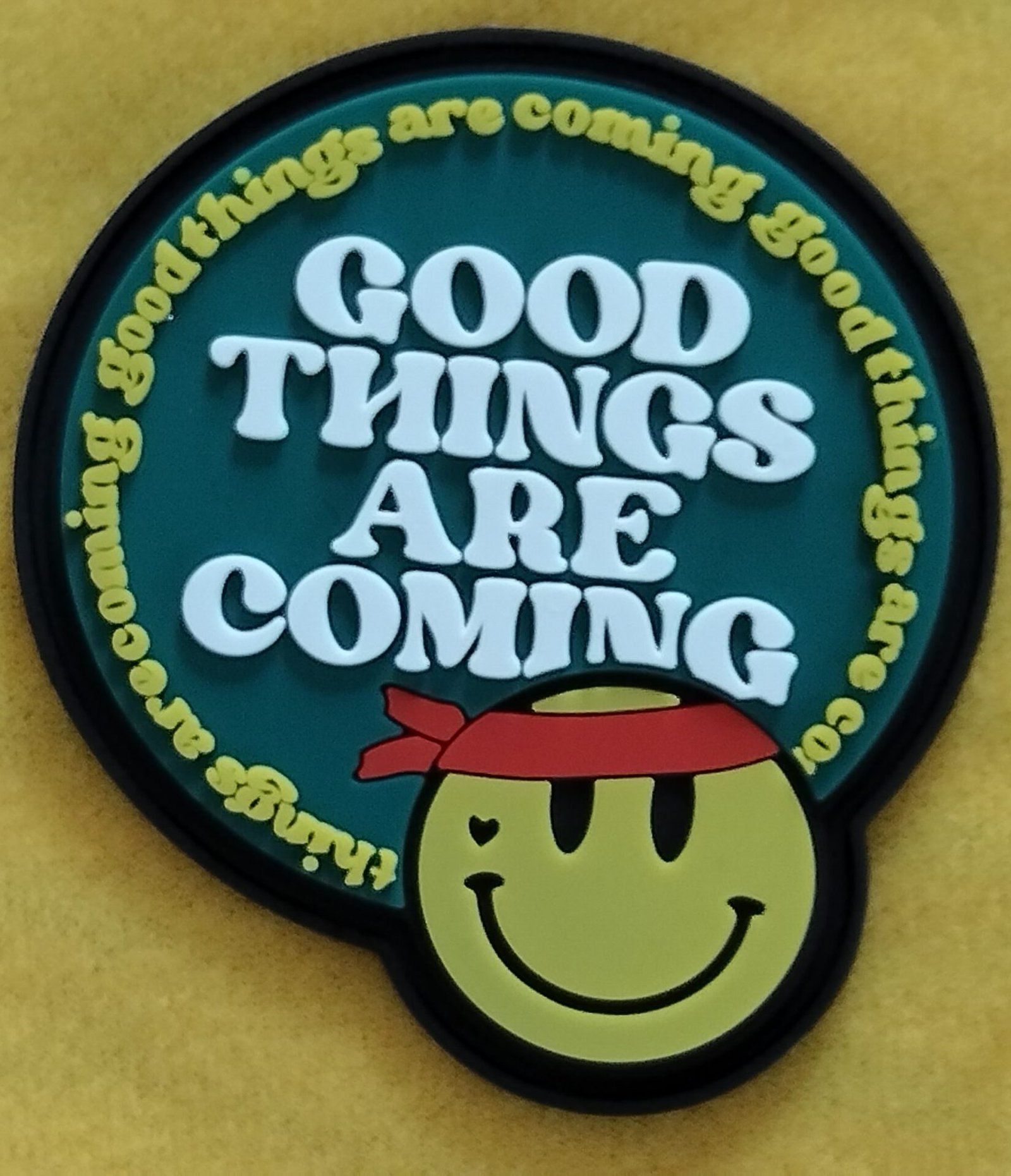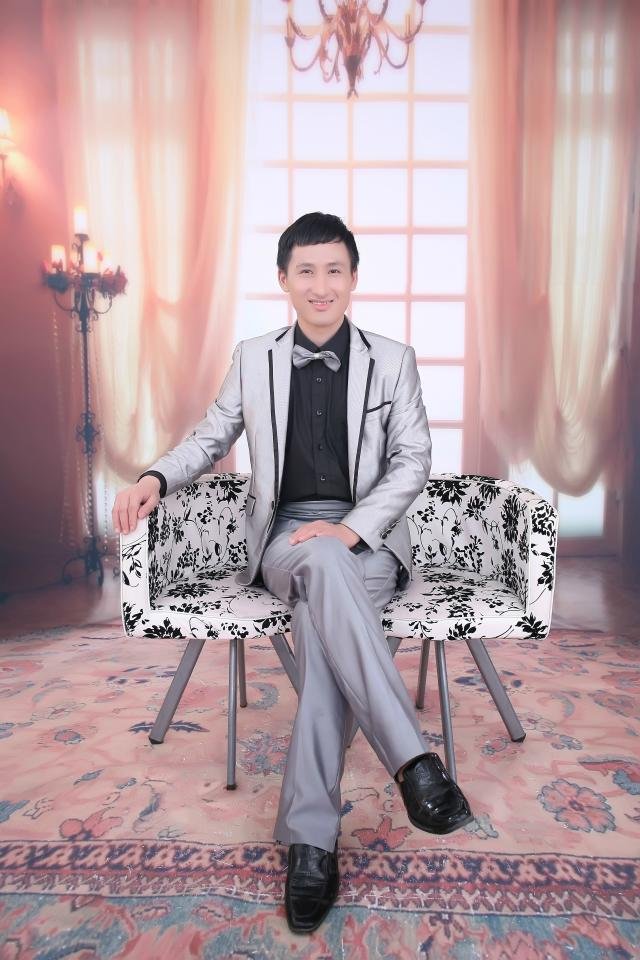PVC Patches Sewn onto Pants: A Fusion of Style and Durability
PVC (Polyvinyl Chloride) patches have revolutionized the world of apparel customization, offering a combination of durability, versatility, and aesthetic appeal. When applied to pants, PVC patches not only elevate the design but also contribute to branding, personalization, and functional enhancements. This article delves into the multifaceted applications, benefits, and creative possibilities of sewing PVC patches onto pants, shedding light on their growing popularity in fashion and utility wear.

1. Introduction to PVC Patches
PVC patches are crafted from a flexible, weather-resistant material that boasts a rubber-like texture. Known for their durability and ability to showcase intricate designs, these patches have become a preferred choice for embellishing clothing, especially pants.
Key Features of PVC Patches:
- Three-Dimensional Appeal: Raised textures add depth to logos and patterns.
- Customizability: Supports a wide range of colors, shapes, and designs.
- Durability: Resistant to wear, water, and UV exposure.
- Secure Attachment: When sewn, PVC patches remain firmly in place.
- Versatility: Suitable for a variety of materials, including denim, canvas, and polyester blends.
When sewn onto pants, PVC patches offer a stylish and durable solution that aligns with both fashion trends and functional needs.
2. Applications of PVC Patches on Pants
PVC patches are used across a wide spectrum of pant styles, from casual wear to professional uniforms. Below are some key applications:
A. Branding
For fashion brands, PVC patches serve as a prominent medium for showcasing logos and trademarks.
- Denim Jeans: Designer brands use PVC patches on the waistband or back pocket for subtle branding.
- Athleisure Pants: Sportswear companies incorporate bold PVC logos to enhance brand visibility.
- Workwear Pants: Industrial and utility brands use PVC patches to highlight their logo, ensuring durability in rugged environments.
B. Personalization
PVC patches offer endless opportunities for customization, making pants unique and personalized.
- Monograms: Add initials or custom symbols to create exclusive designs.
- Thematic Embellishments: Include motifs that reflect personal interests, such as sports, hobbies, or pop culture.
- DIY Customization: Consumers can purchase standalone PVC patches to sew onto their pants.
C. Functional Enhancements
PVC patches go beyond aesthetics by adding practical benefits to pants.
- Reinforcement: Strengthen areas prone to wear, such as knees or back pockets.
- Identification: Display team names or job roles on work uniforms.
- Safety Features: Use reflective PVC patches to improve visibility in low-light conditions.
D. Decorative Accents
In fashion-forward designs, PVC patches are used to make bold statements or add artistic flair.
- Streetwear: Incorporate oversized patches with graffiti-inspired designs.
- Military-Inspired Pants: Feature patches with emblems, flags, or rank insignias.
- Children’s Pants: Use playful shapes like animals or cartoon characters to appeal to younger audiences.
3. Materials and Compatibility
PVC patches are highly adaptable and can be sewn onto various types of pants. However, the choice of fabric impacts the attachment process and the patch’s performance.
Common Pants Materials:
- Denim: Ideal for casual and rugged styles, providing a sturdy base for sewing.
- Canvas: Perfect for workwear or military pants, offering durability and texture.
- Polyester Blends: Frequently used in athletic or uniform pants, ensuring flexibility and lightweight wear.
- Cotton Twill: Common in casual and cargo pants, balancing comfort with resilience.
Considerations for Compatibility:
- Fabric Thickness: Ensure the patch’s edges are adequately sewn for thicker materials.
- Stretchability: For stretch fabrics, consider flexible PVC designs to prevent distortion.
- Surface Texture: Smooth fabrics may require additional reinforcement for secure attachment.
4. Advantages of Sewing PVC Patches onto Pants
A. Durability
PVC patches withstand repeated washing, abrasion, and environmental exposure, making them ideal for both casual and heavy-duty pants.
B. Aesthetic Appeal
The raised, vibrant designs of PVC patches enhance the visual appeal of pants, aligning with contemporary fashion trends.
C. Weather Resistance
Waterproof and UV-resistant properties ensure that PVC patches maintain their appearance over time, even in challenging conditions.
D. Secure Fit
Sewing provides a permanent attachment method, ensuring patches remain intact despite frequent use or washing.
E. Versatility
From high-end fashion to practical workwear, PVC patches adapt seamlessly to various pant styles and purposes.
F. Low Maintenance
PVC patches are easy to clean and maintain, contributing to the overall longevity of the garment.
5. Creative Design Possibilities
PVC patches unlock a world of creative potential for pant customization. Here are some design ideas:
- Geometric Patterns: Use abstract shapes and bold lines for a modern look.
- Pop Culture Icons: Feature characters, symbols, or quotes from popular media.
- Nature Themes: Incorporate motifs like mountains, trees, or animals for outdoor enthusiasts.
- Multifunctional Patches: Combine decorative designs with QR codes or embedded NFC chips for added functionality.
- Text-Based Designs: Include motivational quotes, slogans, or brand taglines.
6. The Sewing Process
Attaching PVC patches to pants involves several meticulous steps to ensure a professional and durable finish:
A. Design and Fabrication
- Patch Creation: Develop a custom design and produce the PVC patch using high-quality materials.
- Edge Refinement: Smooth edges to prevent irritation or snagging during wear.
B. Preparation
- Placement Planning: Mark the desired location on the pants, considering symmetry and alignment.
- Surface Cleaning: Ensure the fabric is clean and free from debris to facilitate smooth sewing.
C. Sewing
- Thread Selection: Use strong, color-matched thread for durability and aesthetics.
- Stitching Technique: Employ reinforced stitching methods, such as zigzag or double stitching.
- Inspection: Verify the patch is securely attached and lies flat against the fabric.
D. Finishing Touches
- Trimming: Remove excess thread for a neat appearance.
- Testing: Check the patch’s durability by applying gentle stress.
7. Challenges and Solutions
A. Patch Rigidity
- Challenge: Rigid patches may create discomfort or restrict movement.
- Solution: Use flexible PVC or place patches in low-impact areas.
B. Complex Sewing Process
- Challenge: Sewing thick PVC patches onto certain fabrics requires skill and precision.
- Solution: Utilize industrial sewing machines and trained personnel.
C. Design Compatibility
- Challenge: Ensuring the patch design complements the pant’s style.
- Solution: Collaborate with designers to create cohesive and appealing designs.
8. Trends and Innovations
The integration of PVC patches on pants continues to evolve, driven by fashion trends and technological advancements:
- Eco-Friendly Materials: Incorporate recycled PVC to appeal to environmentally conscious consumers.
- Interactive Features: Add QR codes or NFC chips for digital engagement.
- Glow-in-the-Dark Designs: Enhance visibility and aesthetic appeal for nightwear.
- Layered Textures: Combine PVC with embroidery or other materials for a unique look.
9. Conclusion
Sewing PVC patches onto pants represents a perfect union of durability, functionality, and style. These patches cater to diverse markets, from high-fashion denim to rugged workwear, offering endless customization possibilities. With their resilience, versatility, and aesthetic charm, PVC patches have cemented their place as a staple in modern apparel design.
As consumer demands and technological capabilities evolve, PVC patches will continue to inspire creativity and innovation in the fashion industry, ensuring their relevance in years to come.


